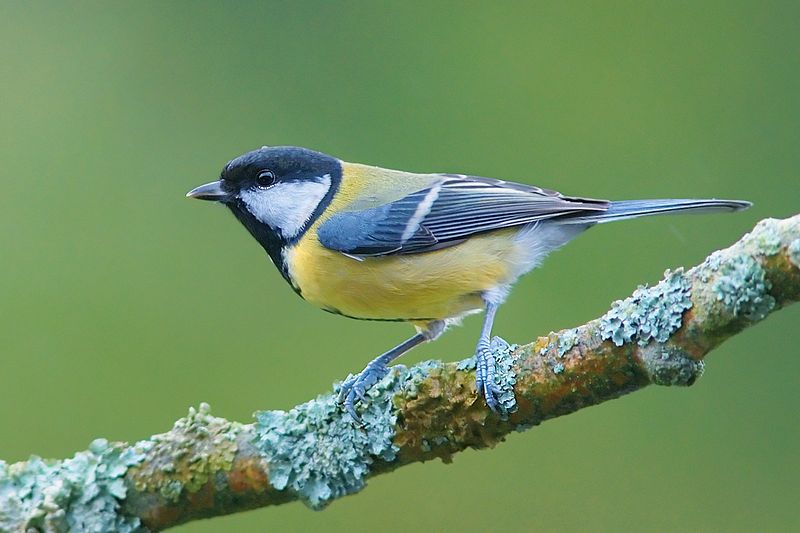We're open daily! View holiday hours
Science News
Birds and Climate Change
July 12, 2013
by Molly Michelson

How will climate change affect different species? Will organisms be able to adapt quickly enough to survive in a rapidly changing environment?
Researchers at the University of Oxford are attempting to predict this with small, short-lived birds like the great tit (Parus major). In a study published this week in PLoS Biology, the scientists discovered that great tits living in a forest near Oxford have been able to survive and adapt to a 1°C temperature increase over the past 50 years.
After analyzing those 50-plus years of data collected on the birds in their habitats, the authors studied when the birds lay their eggs relative to spring temperatures, as well as how the birds have tracked the shifts in peak caterpillar numbers caused by the changes in temperature. They found that the birds are now laying their eggs an average of two weeks earlier than they did 50 years ago, primarily as a result of phenotypic plasticity.
Phenotypic plasticity enables organisms to adjust their behavior rapidly in response to short-term changes in the environment. Jack Dumbacher, curator and department chair of Ornithology & Mammalogy here at the Academy, explains, “It’s heritable but it’s not an evolutionary, or genotypic change. There’s no change in the genes.”
The authors’ predictions show that phenotypic plasticity could allow the great tits—and similar birds—to survive warming of 0.5°C per year, easily outpacing the current worst-case scenario of 0.03°C from climate models.
Dumbacher says that while this study is interesting and a good reminder how adaptable one species may be, he emphasizes that temperature increase is just one effect of climate change. Temperature variance and extreme weather are other effects with unknown results to various ecosystems, he says. In addition, Dumbacher reminds us that the great tits and caterpillars play roles in a much larger ecosystem, where the web of relationships is so interdependent that one small change to one small organism in that web could easily affect other species.
One effect of climate change that Dumbacher stresses (and the study does not mention) is invasive species. As temperatures change, habitat ranges change for different species, which can result in one species invading the habitat of another. One example Dumbacher gives is the Northern Spotted Owl (Strix occidentalis caurina). These birds have been able to adapt to a 1°C temperature increase over the past 100 years but are now facing a fierce competitor in the Barred Owl (Strix varia), an eastern species that now finds itself in the same territory as the Northern Spotted Owl.
“Climate change is more than a one degree temperature increase,” Jack says. “And while a species may demonstrate plasticity within different temperature regimes, it’s likely that ecosystems are not as adaptable. This why climatologists have such a difficult time predicting the effect of climate change on organisms.”
Image: Luc Viatour/Wikipedia